
| Publisher: | Atlantic Monthly Press | |
| Genre: | History, Vietnam War, Biography & Autobiography, Military, Personal Memoirs | |
| ISBN: | 9780802119926 | |
| Pub Date: | August 2011 | |
| Price: | $25 |
| Starred | Fiction |
by Karl Marlantes
Widely praised as one of the best novels written about the Vietnam War, Karl Marlantes's 2010 debut, Matterhorn, was packed with heartrending scenes inspired by his experiences as a young Marine. In What It Is Like to Go to War, Marlantes reveals the intimate details of the real-life moments he fictionalized for Matterhorn and skillfully deploys them to support his call for a paradigm shift in how we prepare soldiers for combat.
"The Marine Corps taught me how to kill, but it didn't teach me how to deal with killing," he writes. Citing Homer, Jung, the Bible and the Bhagavad Gita, among other thinkers and texts, Marlantes contends that "compassion must be elicited consciously in warfare" and suggests that we incorporate mindfulness training into combat preparations and discourage warriors from depersonalizing the enemy. He emphasizes the necessity (and current dearth) of post-combat rituals to demonstrate respect for the lives taken during battle, and recalls how the men in his unit wept as they obeyed his order to bury an enemy soldier after a particularly brutal encounter. Marlantes also recommends the implementation of mandatory counseling to prevent post-traumatic stress disorder, remove the stigma of needing help and enable veterans to rejoin their communities successfully.
What It Is Like to Go to War can be read as both a letter to young warriors and as a catalyzing call for change. But this is not a book about politics; it is about humanity. Using his own experiences to provide context, Marlantes advances, with startling openness, a revolutionary strategy to preserve the humanity of those who fight for our nation and to honor the humanity of those they kill. --Rebecca Joines Schinsky, blogger at The Book Lady's Blog
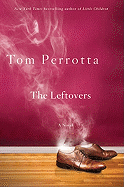
| Publisher: | St. Martin's Press | |
| Genre: | Fiction, Literary | |
| ISBN: | 9780312358341 | |
| Pub Date: | August 2011 | |
| Price: | $25.99 |
| Fiction |
by Tom Perrotta
You get the picture, and that's what Tom Perrotta does best: paint careful, ironic portraits of life as we really know it. Survivors we follow include Kevin, whose nuclear family remains behind, but not intact: his daughter, Jem, was with her childhood best friend who vanished, and she can't quite cope with fashioning her high-school identity. His son, Tom, has left college to follow a character named "Holy Wayne," a combo platter of Jim Bakker and David Koresh. Saddest of all, Kevin's wife, Laurie, has joined a new religious movement known as the "Guilty Remnant," or "G.R.," people who wear all white, follow townspeople whom they suspect of sin, and smoke at all times in public "to remind people of what happened."
When Perrotta focuses on characters, he can't be beat. Kevin's love interest, Nora Durst (who lost her husband and two small children), is so real that you might find yourself searching a mental Rolodex to remember how you know her. The friendship that grows between Laurie and her fellow G.R. member Melissa has real poignancy. Unfortunately, it's in the subplot involving those two that Perrotta has the most trouble maintaining his otherwise laser-keen tone.
Fortunately, the plots (which also include Tom's cross-country journey with one of Holy Wayne's very young and beautiful wives) come together at last, seamlessly. The final pages have a sweet humanity, the kind we all hope for before the sweet by-and-by. --Bethanne Patrick, freelance book critic, aka @TheBookMaven
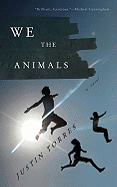
| Publisher: | Houghton Mifflin Harcourt | |
| Genre: | Fiction, Literary | |
| ISBN: | 9780547576725 | |
| Pub Date: | August 2011 | |
| Price: | $18 |
| Fiction |
by Justin Torres
This debut novel's titular "animals" are three boys, nine, eight and six, fighting each other, their parents and life in general. Their Paps is Puerto Rican, big and strong and violent, a serial womanizer; Mami is white, barely five feet tall, fragile and fierce, and works the graveyard shift at the brewery. The boys are left, unsupervised, without food, waiting for Mami to come home, wondering if she will be drunk or sober. When Paps disappears for weeks, Mami is too desolate to work, so their situation becomes even worse.
Mami was 14 when Paps, 16, convinced her that what they were up to would not make her pregnant. Despite Paps's reassurances, Manny was born, followed by Joel a year later and then the narrator, Justin, the odd boy out. The disillusionment, desperation, fear and anger felt by these too-young parents is frequently mitigated by their love for each other and for their boys. When Torres writes of the occasional calming influence of their love, it is as if a cooling rain has suddenly fallen on a raging fire. The three brothers are wild animals, out-of-control marauders in hand-me-down camo clothes, playing war in the woods--who then use all their pocket money to buy milk for a stray cat.
Torres's first-rate prose will leave you gut-socked and breathless. Narrator Justin tries so hard to be macho for his Paps and his Mami, his brothers and--mostly--himself. But macho is not who he is. In "The Night I Was Made," he returns home from cruising the bus station to find his family gathered, his mother reading his journal. He is filthy, unkempt, reeking of sex and the street, wounded in too many ways and now raging at his family. His father bathes him tenderly; they pack his suitcase and take him to a hospital where his wounds, internal and external, will be cared for. Everyone is exhausted, including the reader, but the redeeming factor here is that the writing is exquisite, making the painful trip so worthwhile. --Valerie Ryan

| Publisher: | McPherson | |
| Genre: | General, Fiction | |
| ISBN: | 9780929701943 | |
| Pub Date: | June 2011 | |
| Price: | $25 |
| Fiction |
by Carlos Franz, trans. by Leland H. Chambers
"Where were you, Mama, when all those horrible things were taking place in your city?"
This accusation from her daughter plunges Laura, the heroine of Carlos Franz's English-language debut, set in post-Pinochet Chile, into an abyss haunted by terror and shame. The provincial shrine city of Pampa Hundida is panic-struck when Laura, a former magistrate, returns to the post she fled two decades ago. How will she judge the townspeople who bore witness to atrocities committed in the wake of the military coup that ousted Allende and drove her into exile?
The Absent Sea is not easy to read but it's important to do so. A dark and complex psychological novel along the lines of Dostoyevsky, it dissects dichotomies between past and present, logic and desire, good and evil. Laura is not likable at first; she doesn't even like herself, having cowered in Germany for 20 years rather than remember. And when she allows her memories to return, her recollections, labyrinthian and laced with recurring mantras, are trance inducing. But if Franz's language sometimes sounds overwrought in translation, it also has moments of subtle beauty.
A victim of torture and rape, Laura reserves her harshest judgments for herself. "She sat down when she should have remained standing"--she was complicit. But through her efforts to close the growing gap between herself and her daughter, Laura comes to recognize shades of gray and that the burden of history, both the innocence and the guilt, is shared by all of us. --Tom Lavoie, former publisher
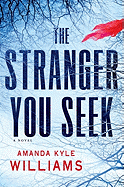
| Publisher: | Bantam | |
| Genre: | General, Suspense, Fiction, Mystery & Detective, Thrillers | |
| ISBN: | 9780553808070 | |
| Pub Date: | August 2011 | |
| Price: | $25 |
| Mystery & Thriller |
by Amanda Kyle Williams
A terrifying and sadistic killer stalks the unsuspecting citizens of sweltering Atlanta, Ga., in Amanda Kyle Williams's suspenseful debut, The Stranger You Seek. Chinese-American and Southern to her core, Keye Street, a former FBI analyst and dry alcoholic, makes her living as a private detective, with a sideline in bail bond enforcement. When her close friend, homicide detective Lieutenant Aaron Rauser, asks for help to track down the vicious killer, dubbed "Wishbone" by the local press, Keye instantly feels her analytical profiling instincts take over. Along with her assistant/resident computer hacker, Neil, she works meticulously to unravel the psychology behind the killings.
As the stress and tension mount, she finds the pressure building to fall off the wagon and have a drink--just one drink. While she struggles with this urge, Wishbone strikes again and again, each murder bringing the killer not only closer to justice, but dangerously close to Keye. Williams deftly re-creates the fictional world of crime and law enforcement in Atlanta, right down to the oppressive heat of August and complete with fully formed and convincingly flawed characters. Perceptive and sharp, Keye is a complicated, engaging main character, as revealed through her episodic entanglements in amusingly odd cases and through the eyes of her colorful friends and adoptive family. With Keye's unveiling, Williams has fashioned an appealing sleuth as unlikely as Stephanie Plum, as resourceful as Precious Ramotswe, as focused as Eve Duncan--and with the tenacity to match all three. --Sarah Borders, librarian, Houston Public Library
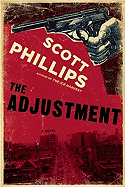
| Publisher: | Counterpoint | |
| Genre: | Fiction, Mystery & Detective, Literary, Hard-Boiled | |
| ISBN: | 9781582437309 | |
| Pub Date: | July 2011 | |
| Price: | $25 |
| Mystery & Thriller |
by Scott Phillips
The Adjustment by Scott Phillips (The Ice Harvest), picked up by Counterpoint after Phoenix Books went out of business, is a noirish tale of a petty criminal plying his trade in Wichita after World War II. Wayne Ogden (we met him briefly in Phillips's The Walkaway) is now out of the army and needs a little adjusting from all the crimes he committed in Europe. He works for the rich owner of Collins Aircraft, a warped man he despises, doing everything nefarious and dirty the old man asks of him.
We first meet Ogden cleaning up another Collins mess--he's driving a young woman to St. Louis to have an abortion. Ogden seems a reasonable sort but he quickly reveals himself to be a self-centered, smart-ass jerk, ready to bed any woman he meets (he's married with his first kid on the way) and beat or kill anyone he dislikes, fulfilled in a perverse sort of way by his sordid and dull existence.
Ogden tells his own story in a dry, distracted, I-couldn't-care-less tone, which makes all his violent actions seem ordinary. The monologue is delivered in short, choppy sections, giving the book a quick, bang-bang narrative pace, with some tension created by a subplot about Ogden receiving unsigned, accusatory letters from an apparently wronged army acquaintance now out for revenge. Ogden is a well-drawn, reprehensible character who's now ready to ply his "trade" on a bigger stage. --Tom Lavoie, retired publisher and poet
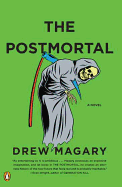
| Publisher: | Penguin | |
| Genre: | General, Fiction, Science Fiction, Literary | |
| ISBN: | 9780143119821 | |
| Pub Date: | August 2011 | |
| Price: | $15 |
| Science Fiction & Fantasy |
by Drew Magary
Right about now, according to the timeline of Drew Magary's debut novel, a genetic researcher in Oregon is trying to figure out a way to counteract the gene that produces red hair, and he's going to accidentally hit upon the key to halting the body's aging process permanently. (It's not immortality: you can still get sick, and you can still be killed.) As The Postmortal begins, it's the summer of 2019, and "the cure" is still illegal in the U.S., but readily available on the black market, and John Farrell, a 29-year-old attorney in Manhattan, is taking the plunge.
Magary has carefully thought through both the short-term and long-term consequences of functional eternal youth, and the world that's fleshed out in John's 60 years' worth of journal entries has many dark twists and flourishes, especially once the American president reluctantly lifts the ban. For every disturbed mother who wants her daughter to be eight months old forever, there's a "troll" who's ready to make the lives of the eternally young miserable. Russia loads up its army with postmortal soldiers and pushes its way into Eastern Europe and Canada, while China tries to preserve its dwindling resources by not just banning the cure, but branding every citizen with their birth date. John's crises may be on a smaller scale, but their power comes from their intimacy: his best friend and roommate is killed when a doctor's office is bombed by pro-death terrorists; he's not sure he has what it takes to get married when "forever" becomes a lot longer than it ever was. "Every morning I look in the mirror and see a body that's a lie," he says decades into the story. "I feel like this skin of mine is just a shell.... You could peel it away and all you'd see underneath would be a sick, wrinkled old man."
John's journal entries are the core of the novel, but Magary really sells his dystopian future with the other "documents" sprinkled throughout the story--pitch-perfect parodies of newspaper and TV articles, religious brochures, even medical bulletins. (As the world's population grows out of control, pharmaceutical companies develop a drug to treat "overcrowding anxiety disorder.") He understands that satire is most effective when it gives the real world a gently absurd nudge, then lets its characters react much as we ourselves might under the same circumstances. --Ron Hogan, founder of Beatrice.com

| Publisher: | Ballantine Books | |
| Genre: | Fiction, Romance, Regency, Historical | |
| ISBN: | 9780345517418 | |
| Pub Date: | July 2011 | |
| Price: | $7.99 |
| Romance |
by Stefanie Sloane
Stefanie Sloane (The Devil in Disguise, The Angel in My Arms) continues the daring adventures of the Young Corinthians spy organization with this latest installment in her Regency Rogues series.
Five years ago, James Marlowe broke Clarissa Collins's heart and disappeared from her life--according to Clarissa. In James's recollection, Clarissa broke his heart and sent him away. Now a British double agent concealed within the French espionage organization Les Moines, James is shocked when Les Moines' attempt to force a Parisian artist into helping them results in his reunion with Clarissa, now apprenticed to the artist. In a matter of moments, Clarissa is pressed into service in place of her injured mentor, and the couple find themselves attempting to maintain a disguise, paint a portrait, dodge hostile spies and control a debutante bent on debauchery. If they fail, not only will the lovers lose all hope of a happy reconciliation, but Les Moines will kill Clarissa's mother.
Sloane's intricate plot makes for a more satisfying read than a tale of love and lust alone. James and Clarissa must rebuild their trust in each other, and the obstacles they face together give them plenty of opportunity. Undoubtedly the most charming obstacle is Iris, the society miss who steals the show with her scandalous behavior. Deadlier concerns--such as a rogue spy with a vendetta against James--keep suspense high until the final confrontation, but the reader will mainly look forward to seeing a happy resolution of the two soul mates' long-standing quarrel. --Jaclyn Fulwood, graduate assistant, University of Oklahoma Libraries

| Publisher: | Brava/Kensington | |
| Genre: | Fiction, Romance, Historical | |
| ISBN: | 9780758231741 | |
| Pub Date: | September 2011 | |
| Price: | $14 |
| Romance |
by Sylvia Day
Are you thinking this summer can't get hotter? Sylvia Day's latest erotic romance may change your mind.
Lady Jessica Sheffield's passion was awakened when she caught devilish Alistair Caulfield in flagrante delicto with an older countess. Though intrigued, Jessica held her tongue and dutifully married another man. Now widowed after seven years of pleasant, uneventful matrimony, Jessica sets sail for the plantation her husband left her, not realizing until after departure that Alistair is also aboard the ship. Free from the prying eyes of Regency society, Jessica and Alistair will succumb to years of buried attraction, but when the voyage ends, will Jessica see Alistair as more than a secret indulgence?
Seven Years to Sin embodies every great quality of a good romance novel, from its gorgeous yet torrid love scenes to its era-appropriate overtones of women's empowerment. Jessica and Alistair's intense connection both in and out of the bedchamber will make you believe in the power of love as they repeatedly tell society and convention to take a hike. Day has created a damaged but honorable hero, a heroine with a tortuous past and the strength to face it, and made each a complete person who is still stronger with the support of the other. On the other side of the coin, secondary characters struggle with difficult marriages and unrequited love, leaving the reader yearning for them to find the same happiness as Jessica and Alistair. --Jaclyn Fulwood, graduate assistant, University of Oklahoma Libraries
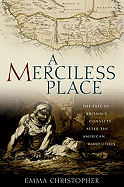
| Publisher: | Oxford University Press | |
| Genre: | United States, Great Britain - General, History, West, Colonial Studies, Africa, Australia, Europe, Revolutionary War, World, Australia & New Zealand | |
| ISBN: | 9780199782550 | |
| Pub Date: | July 2011 | |
| Price: | $29.95 |
| Nonfiction |
by Emma Christopher
It's common knowledge that Australia was founded by British prisoners. It's less well-known that before the American Revolution, convicts were shipped to the colonies in the New World. Even less known is the boondoggle right after the colonies broke away, when a few hundred unfortunates were sent from Britain to the wilds of West Africa to help defend the realm's slaveholding interests. Author Emma Christopher is a University of Sydney professor and an expert on the transatlantic slave trade and therefore well prepared to offer the historical context for this bizarre episode.
Christopher opens with an exhaustive and fascinating recitation of the prisoners' lives and crimes. Some of the condemned committed murders and other heinous acts, but many simply skirted too close to stealing goods worth 40 shillings or more, which mandated a death sentence. The prison system was overloaded, and the government needed a replacement for the American colonies dumping ground, but Australia wasn't yet considered. Thus was born the solution of sending convicts to serve as soldiers in West Africa. It ended poorly.
Enlightening and compelling for such a dense, well-researched work, A Merciless Place offers a sobering illustration of the harsh and often capricious nature of 18th-century justice as well as a clear examination of a massive failure of governmental planning. But the story also borders on black comedy, populated as it is by inept bureaucrats, opportunistic criminals and downright villainous authority figures. This rogues' gallery was shockingly unprepared for guard duty anywhere, much less the harsh tropics. When Christopher focuses on colorful characters like the Fagan-ish Patrick Mandan and the gentleman crook William Murray, her tale is even outright entertaining. --Kelly Faircloth, freelance writer
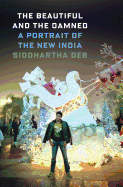
| Publisher: | Faber & Faber | |
| Genre: | Travel, Sociology, General, Biography & Autobiography, History, India & South Asia, Social Science, Asia, Personal Memoirs, India | |
| ISBN: | 9780865478626 | |
| Pub Date: | August 2011 | |
| Price: | $26 |
| Nonfiction |
by Siddhartha Deb
In The Beautiful and the Damned, Indian-born novelist and journalist Siddhartha Deb attempts to understand the realities of the New India that has emerged with the rise of computer technology and international call centers.
Deb, author of The Point of Return, which was a 2003 New York Times Notable Book of the Year, presents his findings in a series of character sketches. A Gatsby-like businessman is famous for being famous. A computer engineer composes poetry in binary code and inscribes it on the blank portions of the computer chips his company manufactures. A desperate seed broker teeters on the edge of bankruptcy. A young waitress in New Delhi agonizes over her future. The author introduces us to those who have succeeded in the new economy, those who have forgotten and--most vividly--those who aspire to success.
Ultimately, The Beautiful and the Damned tells us as much about Deb as it does about India. He admits from the beginning that questions about his own identity are part of the larger puzzle of what India has become. Deb's interactions with the Indians he interviews are a critical part of each story. The book takes the form of an expatriate journey in which Deb travels through an India that is "sometimes intimately familiar and sometimes completely unknown."
The Beautiful and the Damned is De Tocqueville in miniature, with beautiful prose, thoughtful analysis and strong characterization. --Pamela Toler, blogging at History in the Margins
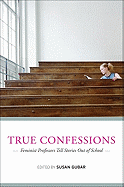
| Publisher: | W.W. Norton | |
| Genre: | General, Women's Studies, Social Science | |
| ISBN: | 9780393076431 | |
| Pub Date: | August 2011 | |
| Price: | $29.95 |
| Nonfiction |
by Susan Gubar, editor
Volumes have been written--and careers built--on investigating the origins of feminism, but what of the origins of feminists? In True Confessions, groundbreaking academic feminist Susan Gubar presents essays from more than two dozen women's studies pioneers about the personal experiences that ground their theories and the professional repercussions of their feminist identities.
Nancy K. Miller and Jane Marcus identify ties between their fathers and their struggles against patriarchy, but Tania Modleski and Shirley Geok-lin Lim cite their mothers as the impetus for their pursuit of feminist sisterhood. Meanwhile, Dyan Elliott explores the relationship between feminism and religion, a recurring theme that touches on many disciplines of the humanities.
The intersection of race, class and gender looms large in these pieces, as it does in any Women's Studies curriculum. Among contributors who address sexual harassment in academia are Martha C. Nussbaum, who recalls crashing the gates of an all-male philosophy department, and Ann Douglas, whose male colleagues frequently interpreted her enthusiasm for their shared studies as sexual interest in them. Jane Gallop presents another side of the issue, asking what it means--and if it is even possible--to be a feminist accused of sexual harassment.
Frances Smith Foster and Tey Diana Rebolledo reflect on the tension between an individual's feminist and racial identities. Lillian Faderman explores links between feminism and lesbianism, and Nancy Chodorow synthesizes her remarkable career in feminist-oriented psychoanalysis into a stunning essay.
Intellectual giants who changed history fill these pages with remarkable stories of the personal liberations, sexual awakenings and professional challenges. True Confessions is a must-read for all feminists, a master class in the origins and evolution of women's studies and feminist activism. The contributors establish that the personal is still political; if we think feminism's work is done, we must think again. --Rebecca Joines Schinsky, blogger at The Book Lady’s Blog
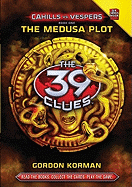
| Publisher: | Scholastic | |
| Genre: | Mysteries, Espionage, & Detective Stories, Juvenile Fiction, Action & Adventure, Europe, Historical | |
| ISBN: | 9780545298391 | |
| Pub Date: | August 2011 | |
| Price: | $12.99 |
| Children's & Young Adult |
by Gordon Korman
They're baaack! Yes, for those who couldn't get enough of the popular 39 Clues series, here's the first volume of the new six-book series: Cahills vs. Vespers.
Brother-sister team Amy and Dan Cahill are now head of their family. Their hunt for the 39 Clues leading to the source of power is over. But before they have time to rest, reports arrive of strategic kidnappings taking place in Paris, London, Tel Aviv and elsewhere. Amy and Dan receive an ultimatum from the Vespers: they must steal the valuable Medusa artwork, or their kidnapped family will be killed, one by one.
The action will feel familiar, with challenges, escapes and plot twists that stretch Amy and Dan to their limits (and beyond!), and with the use of their special abilities they continue to surprise and delight readers as they overcome these obstacles and accomplish their mission. Without giving away the mystery, let's just say there is a kidnapping, an art robbery, an amazing getaway and even a little romance for Amy. Fans will also recognize many returning characters, including Saladin the cat, Nellie Gomez and Fiske Cahill. But even if you haven't followed the first series, you can pick up here and enjoy this book without any trouble. As with the 39 Clues, the story unfolds through a multi-platform approach, with an accompanying website and two packs of cards that integrate into this interactive middle grade series. --JoAnn Jonas, public librarian and blogger
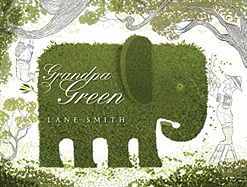
| Publisher: | Roaring Brook/Macmillan | |
| Genre: | General, Multigenerational, Juvenile Fiction, Family, Nature & the Natural World | |
| ISBN: | 9781596436077 | |
| Pub Date: | August 2011 | |
| Price: | $16.99 |
| Children's & Young Adult |
by Lane Smith
The opening image introduces a baby sculpted in greenery, with a spray of what looks like tears where the eyes would be. "He was born a really long time ago," the book begins, "before computers or cell phones or television." A turn of the page reveals a boy in overalls and boots, holding a hose--the source of the "tears." Playful discoveries like these abound.
Roughly halfway into the story, we learn the boy is the narrator, describing his great-grandfather. Each topiary tells a story, and additional colors call attention to important details of the man's life, such as a daisy that doubles as the fuse on a cannon-shaped hedge representing his "world war" experience. As the boy fills a wagon with stray items he finds, we gradually realize he is picking up after someone ("He used to remember everything"). An image of the boy reaching from the top of a ladder to retrieve a floppy straw hat from the brow of an elephant topiary, the image resonates with the cover portrait of his great-grandfather. An elephant never forgets, and neither does the garden. Its evergreen monuments hold Grandpa Green's memories when he cannot.
Opening this book is like opening a gate to a secret garden, filled with the treasures of a life well lived. In his portrait of a boy who adores and honors his forgetful great-grandfather, Smith shows us that the things that are meaningful to the ones we love become part of our garden, too. --Jennifer M. Brown, children's editor, Shelf Awareness